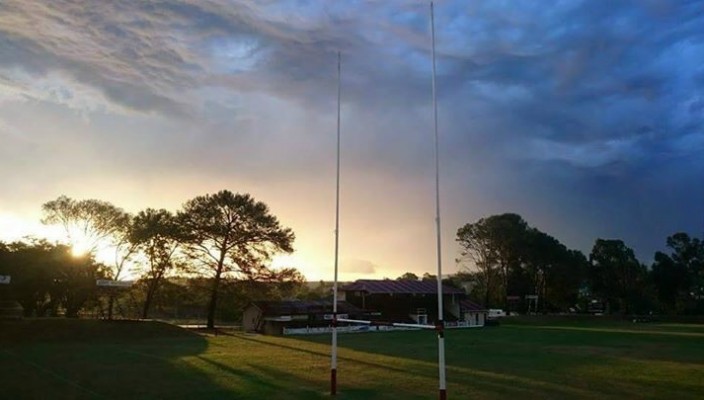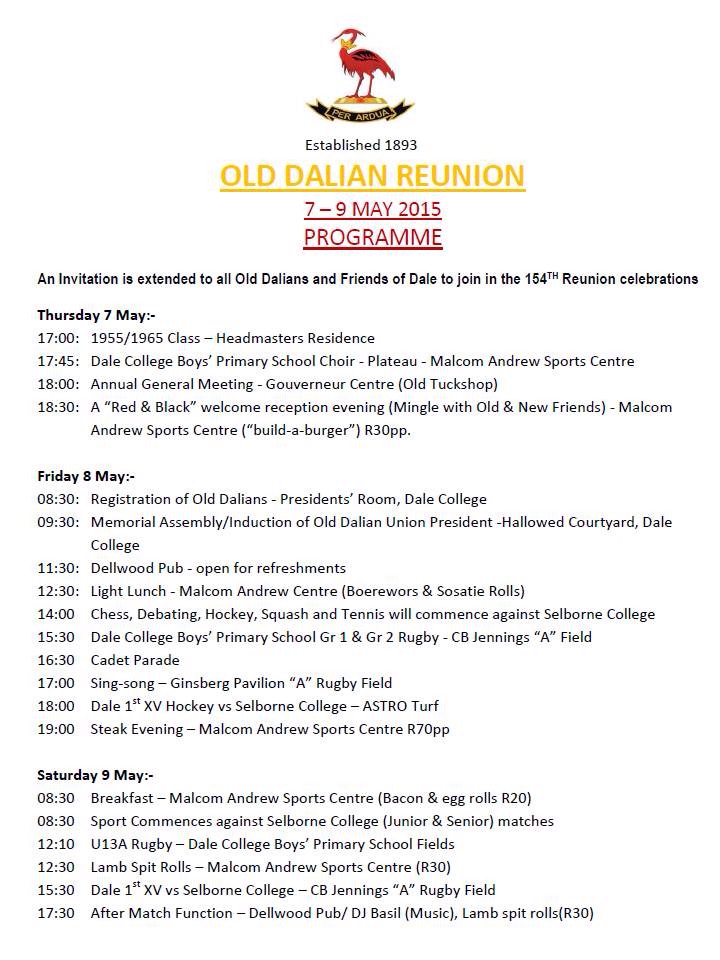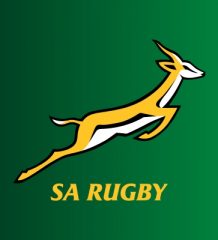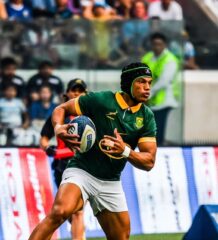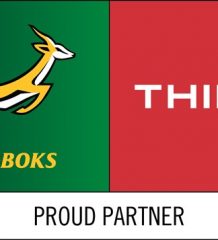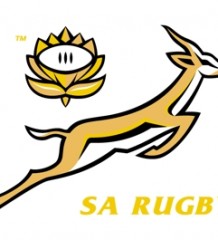Dale College editorial background and vs Selborne College
The Big question;
Can Dale College create history make it 100 First XV Rugby wins against ‘Old” arch rivals Selborne College at the Reunion rugby match on Saturday. 9 May 2015 and will the Heron fly high?
Both schools have a wonderful and colourful history as educational institutions and as on field sports rivals.
Let us look at some back ground of Dale College to best understand the rivalry between the “the Fish or Baboena” of East London and the “Dead Cats” of King William’s Town
Dale College has its seeds in educational ventures of an earlier era. Research conducted by Old Dalians the late LLF Wood that can be traced back to pre 1850 era when tuition in basic literacy had been provided for the garrison personnel, particularly the younger men and the bugle and drummer boys of the military band detachment. Research conducted by Old Dalians, the late Mr. L L F Wood, Tom Sheard and Barry Turner show that Dale College’s heritage goes back to 1840
By 1860 King William’s Town was no longer merely a military presence but had grown and was a prospering trading centre, and the townsfolk were beginning to realise the need for parochial elementary and grammar-school education.
By 1861 King William’s Town could boast at least two formalised schools – The Undenominational Public School for Boys – later to be named Dale College, a modest affair but part of the system for national education begun by South Africa’s first Superintendent-General of Education, James Rose Innes. The second was the Diocesan Grammar School, established by Sir George Grey with a donation of five hundred pounds and provided the Anglican Bishop of Grahamstown would raise a like sum.
At this time, The Public School came under the management of the Borough Council of King William’s Town and in its important, formative years was fortunate to have as its headmaster John Samuel, a dedicated teacher who went on to become a deputy inspector of schools. It might be said that the school under headmaster Mr. Samuel, however small and undistinguished its beginnings, was on the move from the start, occupying various buildings around the town and at various times. These sites included the earliest buildings in which it was housed and is still in commercial use, in Durban Street, opposite the Holy Trinity Church; another was in Smith Street, and there was one in Cathcart Street that later, until 1970, housed the Wilfred Scott Secondary School. Another site was in Eales Street. Thereafter in Albert Road (Dale Junior building) and Dale College on the hill overlooking the town and opened in 1960.The Diocesan Grammar School building, built in 1861, lasted no more than a year, and, having succumbed to the greater popularity of the public school, was leased by Mr Samuel’s school from 1867 and ultimately incorporated into the Undenominational Public School for Boys.
On 6 September 1877, the foundation stone of the new school was laid by Governor Sir Henry Bartle Edward Frere on the Queen’s Road site, (Sutton Square) and the then Headmaster, Mr. Fuller, was able to announce that Dr, Sir Langham Dale had consented to his name being given to the new institution and his distinctive heron family crest becoming the school’s emblem.
The naming of Dale College, said Headmaster R H Fuller, was an indication of the respect that the founders had for the Hampshire-born Superintendent-General of Education whose innovative endeavours in the cause of education in South Africa — for which he received a knighthood from the British Crown. Today the distinction earned by a multi-racial Dale College among the top schools in South Africa is a fitting monument to the contribution made by Sir Langham Dale to the development of the educational system in South Africa. Undeniably a school with a fine reputation, worthwhile traditions, enviable facilities and a magnificent location, Dale College is a dynamic institution and one of which Sir Langham Dale would be proud.
A great school is not great because of its achievements. The achievements are the fruits of the identity, values, and dynamism of the people who work together to form the school spirit. Dale College has excelled in academic and sporting pursuits. From Eisteddfods to Olympiads, from Provincial to Springbok and International Colours.
Dale is comparable to any of the prestigious schools of South Africa. Nevertheless, what is it that is unique to Dale? Even though Dale has more than a 154-year-old history and has developed priorities and emphases during those years, a Dalian is a particular type of person, aware of resources tapped from depths that are particular to the name of Dale. It is difficult to name the precise dynamic, which is Dale. Nevertheless, in the foreground, firstly, is readiness. This is the readiness to turn towards problems; to respond and not to shrink.
Dale is a spirit of intuitive confidence. Dale is also about optimism. This optimism is not shallow; it recognises challenges and obstacles. It negotiates delay and defeat. However, desperation and surrender are not part of Dale’s vocabulary. As a Dalian internalises and acts out the confidence and hopes which are part of the College’s every day expectation, he learns that with his fellow Dalians he can achieve a special competence for life
The confidence, hope and strength are significant at this time and for the future. Perhaps Dale’s most poignant image is the lone soldier in the Hallowed Courtyard, facing the Amatole Mountains, but with bowed head as he prays in the words of the memorial song for a “new freedom”. In terms of daily routine, school policy and vision for the future, Dale continues to frame a sure and vigorous response. Dale College does not depend solely on appropriate curriculum, academic proficiency and effective policy. It looks for the dynamic centre of its historic and present family; it voices the silence of the lone soldier, bringing into reality that sense of ongoing purpose, which is the true inspiration of every Dalian.
Rugby
In 1876 the game of rugby had an outspoken opponent in the person of The Rev. L S Brown, then Headmaster of the Diocesan Grammar School in Durban Street, King William’s Town. This became Diocesan Hostel after Dale also ran the DGS as part of Dale. The Reverend Headmaster was quoted in the local Newspaper, The Kaffrarian Watchman, on June 28, 1876 as saying:
“Rugby is a rough game, badly played in King William’s Town. Soccer is a safer and less spiteful game”
The Right Reverend’s views were obviously never taken seriously by the King William’s Town public or those pioneers of Rugby at Dale College.
The first recorded rugby match played by Dale College took place on the 31 July 1880 against the adult Ever Ready Rugby Club of King William’s Town. The match was played on the Cricket Ground between Past and Present Dale College and the Ever Ready Club team. The Collegians having won the toss, elected to defend the lower goal and the Ever Readies claiming the ball kicked off at 3:35 p.m. The match eventually ended in favour of the Ever Readies and was well contested by the Dale Collegians who, though playing with fourteen men, compelled the Ever Readies to touch the ball down twice in self-defence!
The first time Dale College and Selborne College met on the rugby field was in 1892.
However, the first recorded sports contact, a cricket match, against another school was played against the East London Public School – the forerunner to Selborne College – in 1881.
Which ever ways we look at it these schools have a significant history of sporting contacts against each other. This keen and loyal rivalry and respect for each other must never be allowed to disappear!
The first time these two schools met on the rugby field was towards the end of the 1892 rugby season. The East London Public School (later to become Selborne College) travelled to King William’s Town to play a game against Dale College. Dale won this game by 2 tries to 1 try. For Dale, the player A. Welsh crossed for the first try. MacDonald, scored for The East London School before J. Green crossed for Dale’s second try to win the encounter.
This makes Selborne College Dale’s second oldest rugby schoolboy rivals.
Rugby between Dale College and Selborne College always provides the enthusiast with a hard fought rugby game in which no prisoners are taken. The legendry spirit and atmosphere in which Dale play their rugby against Selborne is unique. It does not matter how good or bad the season has been for either side. The slate is wiped clean on the day and only the game ahead is important to both players and the many supporters of both schools. The continued rivalry is a tribute to all those great schoolboy rugby players who have represented Dale College and Selborne College’s First Rugby teams since those first games in 1892.
The Dale College War Cry:
Aha! Aha! Aha!
Kangela e Dale College
A-a-au tjeni!
Kauleza! Kauleza! Kauleza!
Kaba! Kaba! Kaulezani!
Kaba! Kaba! Kaulezani!
Kwau!
Dale College! Amadoda! Ewe!Shhhh
DALE!
Note:
The famous Dale College War cry was penned and introduced by Mr. N.C. Dugmore, (a teacher, rugby coach and rugby player at Dale College) in about 1929. Mr Dugmore moved to Muir College in 1931 and introduced the Dale War Cry at Muir!
We will never know his reasoning other than to speculate that he did not have the foresight that in years to come, Uitenhage would be a few hours drive away from King William’s Town and Dale College. Maybe, Mr. Dugmore had no confidence in the ability of those at Muir College – South Africa’s oldest school – in developing an original and personalised war cry!
What ever the reasoning, Dalians always accuse Muir College of propriety theft! All in good spirit and taste – of course.
The 1967 game against Selborne College was called off for the home leg. There was some niggling and “rough stuff” on the game in East London on the BRU. This according to Old Dalian John Brown a member of the Dale First XV on the day was started by the Selborne lock Kriel. This lead to an on the field fight between the players. Ironically, Brown’s Old Selbornian son is married to Kriel’s daughter!
Selborne coach Neil Emslie recommended that the return game be called off to “cool the situation”. The press had a field day with suggestions that the game be played in Berlin – neutral territory!
The Home and Away fixtures began in 1931. 1938 Saw the two schools meet three times that year – never been repeated.
The 1938 Dale College Rugby First XV under their Captain, Gordon “Fatty’ Eekhout, became the first side since 1916 to go through a season unbeaten.
Dale featured in two main curtain raisers during the season. Both games were to the touring British Lions Team against Border at East London. The first curtain raiser Dale played against Queen’s College and won 9-5. In the second curtain raiser, Dale played against Selborne College. The result was a Dale win by 17-3.
The curtain raiser matches of the season resulted in Dale playing both Queen’s College and Selborne College three times each during the season. This was a first between the schools and has never happened again. Dale has the unique record of winning the “Triple” Header!
First Inter Schools Games
30 August 1891. Dale College vs. Queenstown Public School (Became Queens College in 1910)
A year later in 1892, Dale College vs. East London Public School (Became Selborne College in 1907) These two schools are Dale’s longest standing and traditional rivals.
However, despite their unbeaten record, rugby was soon banned at Dale in favour of Association Football: soccer, the Other Game. No Dalian worth his salt would stand silently in the face of such sacrilege. The ban saw the rise of Dale’s “rugby rebels”, those who defied the ruling. In the days of corporal punishment, they paid a painful price for their preference for the oval ball but nothing would daunt them.
For nearly 20 years, from 1893 to 1909, the rebels played rugby under the name of the “Shamrocks”. Finally, in 1910, the Headmaster Rev J.G. Sutton surrendered a battle he must have realised he would never win. The Dale College Rugby Football Club was born.
Over a year later and towards the end of the 1892 season, the East London Public School (later to become Selborne College) travelled to King William’s Town to play a game against Dale College. Dale won this game by 2 tries to 1 try. For Dale, the player A.Welsh crossed for the first try. MacDonald, scored for The East London School before J. Green crossed for Dale’s second try to win the encounter. This makes Selborne College Dale’s second oldest schoolboy rival.
No matter the past history or the tale of the tape the records are meaningless on the day. Each side prizes a win against the other side! There have been some extraordinary games between these two schools. Some last minute snatches of victory, some run away wins and many nail biting finishes. One this is certain a rugby game between Dale College and Selborne College brings out the best on field and off field rivalry between both players and spectators. More so from the Old Boys of each school. At the end of every game they can all sit back and enjoy refreshments with each other and chat about the immediate past game and many games fro history.
Some comments by Old Selbornians – the 1964 last game of the season: Both Dale and Selborne Colleges unbeaten!
Prof Ken Dovey reminisces from University in Australia
“I have a couple of memories of the occasion. I remember that Neil Emslie decided that our tactics for the game were to use me as a foil and for Glen Page to play away from me. This worked very well in the first half and, if my memory is correct, on the basis of this tactic we ran up an 11-3 lead by half time. The second half, however, was a different story and we should have changed the game plan as Dale started getting on top.
From a Selborne perspective, a major factor in the defeat was Norman Hardwich getting injured and going off with ten minutes to go, and Michael Crossman, the Dale scrum-half, exploiting Norman’s absence on the side of the scrum and scoring under the poles from a scrum, ten yards away from our try line, to clinch the game 12-11 for Dale. After match memories are many guys crying in the change rooms – the defeat devastated us – and of a Clarendon girl (one of the spectators at the match) being killed in a car accident just outside King on the way home from the game. I remember Neil Emslie saying to us the following Monday that her death put our defeat in perspective for him – that he had
thought that there could be nothing worse than losing that game but her accidental death made him realise that there were more important things in life than rugby matches”.
Staunch Old Selbornian Mick Cowley from East London remembers
“Selborne were unbeaten until the last game of the season against the unbeaten Dale College of King William’s Town. Headlines in the Daily Dispatch on the Monday were
“Dale snatched thrilling win over Selborne”.
Some sympathy must be felt for Selborne, they had the better of the first half scoring three tries with McEvoy only converting one and it was only after losing Norman Hardwich in the second half with an ankle injury with 14 minutes to go that Dale got the six points needed for victory. No replacements in those days. Gary McEvoy also missed an easy penalty in the dying minutes of the game.
The Dale forwards had a slight edge in the scrums but Andre de Wet later to play for South Africa dominated the line outs. There was little to choose between the two packs. Mickey Crossman of Dale scored the winning try.
When I walked off the field that day I had tears in my eyes.
Guys that I remember well are Michael Jennings (Also an ex Springbok), Michael Dickson and Chow Bissell who both played Border Schools with me. Also, Derrick Schreiber, Denzil Filmer and Charlie Pope”.
Fast forward to 2015 and the 190th game between these two great schools.
An interesting match awaits supporters of both schools when they meet in King William’s Town. Selborne are a formidable unit and enjoying a good start to the season only one loss. Dale College have also only suffered one loss and come off of a good win against Queen’s College in Queenstown. Both sides have respected coaches – Kevin Taylor for Selborne and Old Dalian Grant “Griffy” Griffith for Dale. No doubt they and their support staff will be strategising the win over the “Old Foe”.
Dale are on the cusp of an Historic win to record the first 100 wins against any single opposition whilst Selborne will do everything to starve the Dalians of both ball and a win.
This game promises all supporters of schoolboy rugby a game out of the top draw.
What ever the result we all wish the teams a great game and a win for good hard and clean rugby as well.
The tale of the tape reads:
Year of first game: 1893
Games played to date: 189
Dale wins: 99
Dale loss: 67
Games Drawn: 23
Points for Dale: 1894
Points for Selborne: 1661
Fixtures to date in 2015
| SELBORNE | ||||||
| 1 | Sat.21Mar | Hudson Park | 43 | 22 | Won | Border R/D |
| 2 | Sat.28Mar | Brandwag | 45 | 12 | Won | Graeme Rugby Day |
| 3 | Thu.02Apr | Kearsney | 48 | 7 | Won | Kearsney Easter Rugby Fest |
| 4 | Sat.04Apr | Menlopark | 28 | 20 | Won | Kearsney Easter Rugby Fest |
| 5 | Mon.06Apr | HTS Middelburg | 15 | 23 | Lost | Kearsney Easter Rugby Fest |
| 6 | Fri.17Apr | Grens | 49 | 20 | Won | Away |
| 7 | Sat.25Apr | Outeniqua | 22 | 24 | Lost | Wildeklawer |
| 8 | Mon.27Apr | Diamantveld | 17 | 17 | Drew | Wildeklawer |
| 9 | Fri.01May | Queen’s | 25 | 9 | Won- | Home |
| DALE | ||||||
| 1 | Sat.21Mar | Port Rex | 41 | 0 | Won | Border R/D |
| 2 | Sat.28Mar | Graeme | 27 | 0 | Won | Graeme Rugby Day |
| 3 | Thu.02Apr | SACS | 12 | 22 | Lost | Kearsney Easter Rugby Fest |
| 4 | Sat.04Apr | Westville | 22 | 10 | Won | Kearsney Easter Rugby Fest |
| 5 | Mon.06Apr | Kearsney | 45 | 26 | Won | Kearsney Easter Rugby Fest |
| 6 | Sat.18Apr | Queen’s | 29 | 19 | Won | Away |
| 7 | Wed.29Apr | Stirling | 70 | 3 | Won | Home |
Related Posts
« Mathers appointed NSWRU President Match report: Kearsney College vs DHS »


